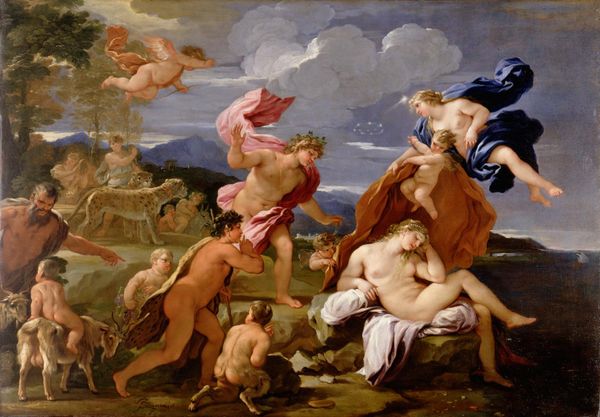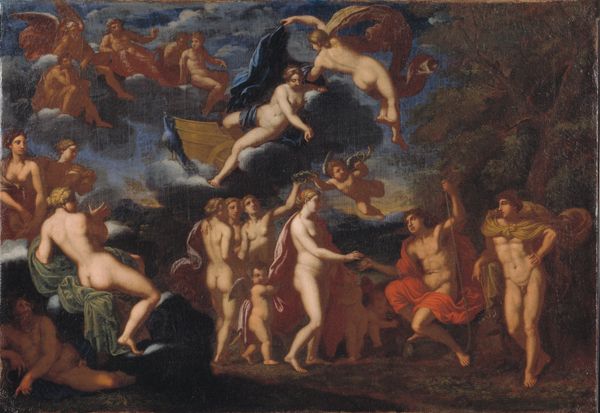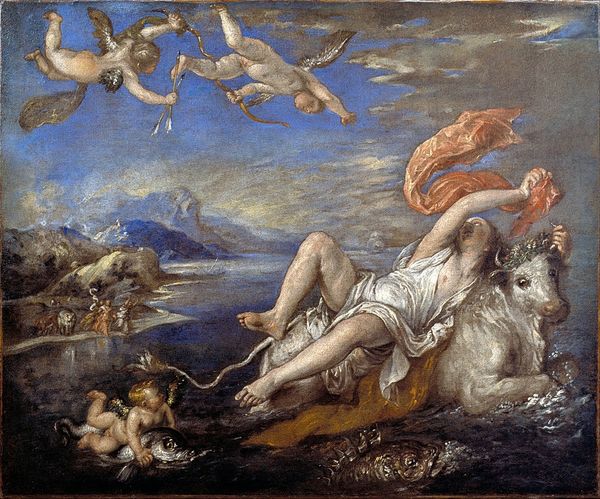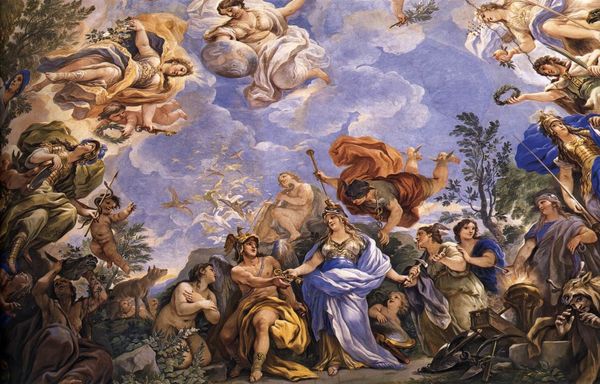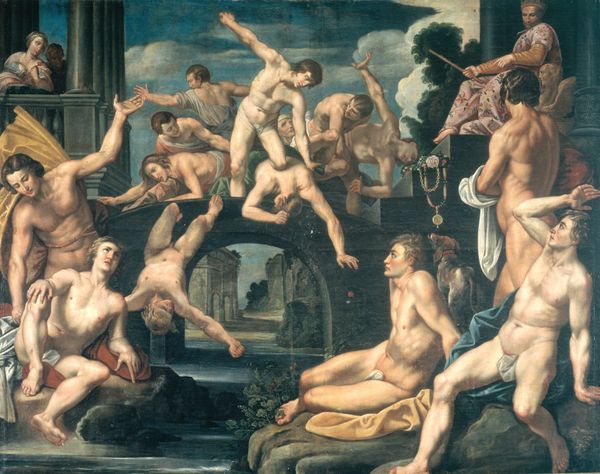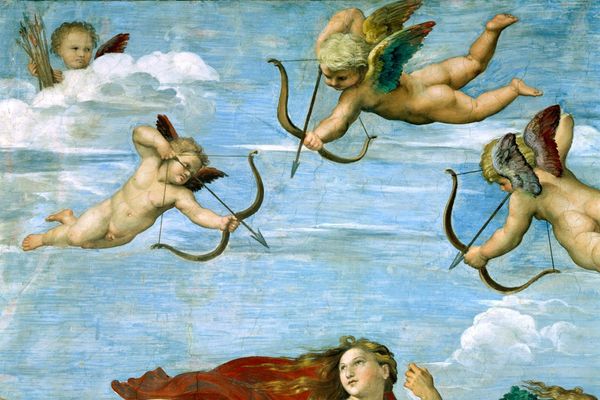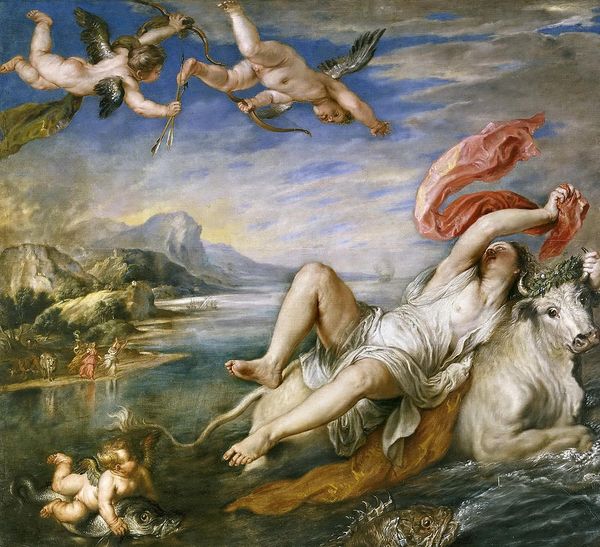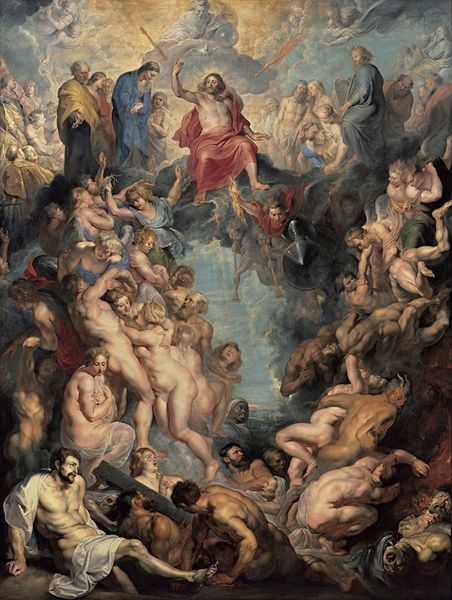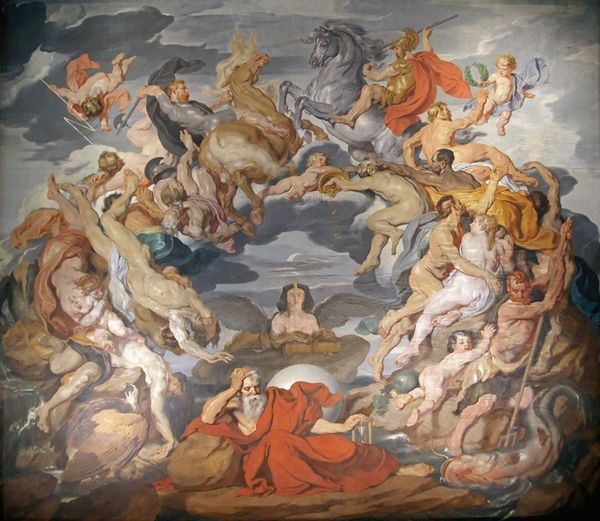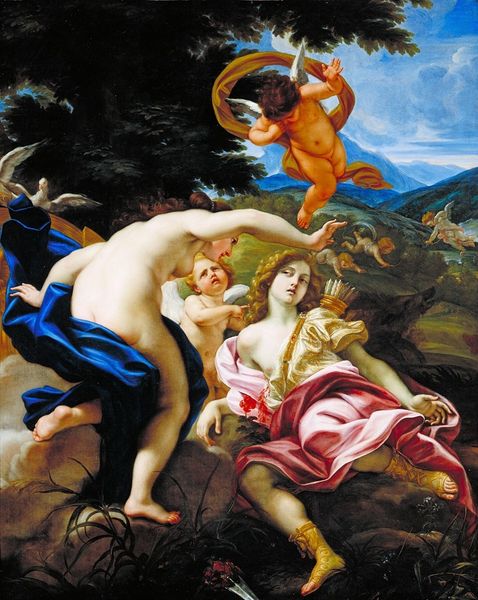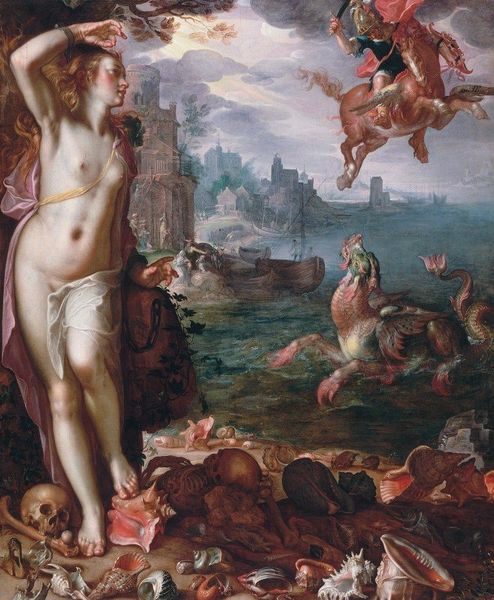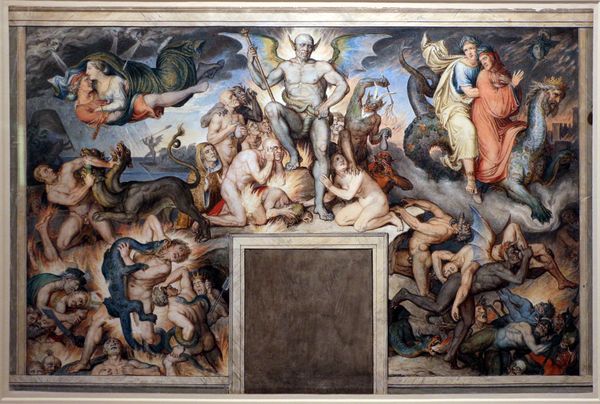
painting, oil-paint, fresco
#
high-renaissance
#
allegory
#
painting
#
oil-paint
#
fresco
#
oil painting
#
mythology
#
history-painting
#
italian-renaissance
#
nude
Dimensions: 295 x 225 cm
Copyright: Public domain
Curator: This vibrant fresco before us is Raphael’s "The Triumph of Galatea," created in 1512, and still adorning the Villa Farnesina in Rome. What are your initial thoughts on encountering this piece? Editor: An immediate impression of joyous chaos. A rush of figures tumbling through a cerulean expanse. There is an undeniable feeling of liberation. Curator: Indeed. It is steeped in the tradition of Renaissance Humanism. It represents more than just mythology; it's an active conversation with it, reflecting a moment of immense cultural transition, mirroring socio-political shifts through the artistic reimagining of classical narratives. What elements speak to that history for you? Editor: The prominence of mythological figures immediately leaps out, echoing centuries of cultural memory associated with similar figures in different periods and regions. Consider Galatea herself, her windblown red cloak almost signaling the moment of the epiphany. And what do you think that might symbolize? Curator: Potentially the active role women had within art and political spheres at the time. She's clearly in charge, unfurling power amid a very male-dominated space. How fascinating it would be to unpack these gendered representations within that cultural framework. Editor: True, but also in relationship to the symbolism of other High Renaissance pieces: note the presence of putti above her; aren't they visual cues to Cupid's arrows, to inescapable desire? Her triumphant, self-assured stance is perhaps also shadowed by a certain vulnerability of the heart? Curator: It's true: we need that dialogue between the classical ideal and a contemporary theory of power, of how representation intersects with the sociopolitical narrative. To unpack these complexities would offer fascinating insights, perhaps prompting further questions than clear answers! Editor: Agreed, which is ultimately what a compelling symbol achieves—offering pathways rather than final destinations of meaning. The ongoing rediscovery is what keeps images potent through history.
Comments
No comments
Be the first to comment and join the conversation on the ultimate creative platform.
